In the pursuit of sustainable gardening practices, the art of composting takes center stage. Composting is a magical transformation where kitchen scraps, yard waste, and organic matter turn into nutrient-rich soil that nourishes plants and promotes a healthy garden ecosystem. For those with limited space or an affinity for raised bed gardening, creating a DIY raised bed compost bin is a game-changer. We'll explore the ins and outs of turning waste into gold with the construction of compost bins right on your raised beds.
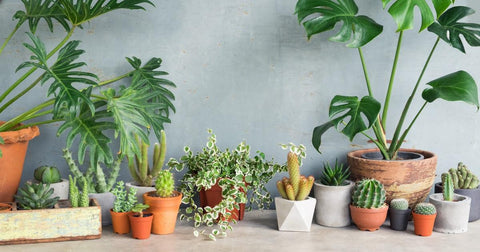
The Magic of Composting in Raised Beds
Composting is a natural process that decomposes organic matter, transforming it into a nutrient-rich material known as compost. The beauty of composting lies not only in reducing waste but also in creating a valuable resource that enriches the soil with essential nutrients, improves soil structure and enhances water retention. Raised beds, with their contained and organized structure, provide an ideal canvas for incorporating composting directly into your gardening routine.
Materials Needed:
- Wooden Boards or Cinder Blocks:
Choose sturdy materials to construct the sides of your compost bin. Wooden boards or cinder blocks work well, and the dimensions can be tailored to fit the size of your raised bed.
- Hardware Cloth or Chicken Wire:
This will be used to create a breathable and protective barrier around the compost. It helps contain the compost materials while allowing air circulation for optimal decomposition.
- Hinges and Latch (Optional):
If you want to create a compost bin with a hinged lid for easy access, consider using hinges and a latch. This facilitates turning and accessing the compost when it's ready for use.
- Composting Materials:
Gather a variety of green and brown materials for your compost. Green materials comprise kitchen scraps (vegetable and fruit peels and coffee grounds) and fresh yard waste. Brown materials include dried leaves, straw, and shredded newspaper.
- Composting Activators (Optional):
To speed up the decomposition process, you can add composting activators such as finished compost, manure, or a commercial compost accelerator.
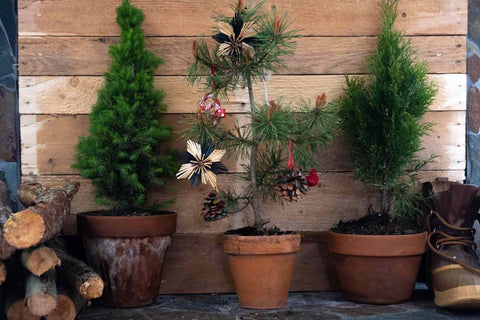
Building Your DIY Raised Bed Compost Bin
Step 1: Choose the Location
Select a suitable location within or adjacent to your raised bed. This spot should have good drainage and be easily accessible for adding and turning compost.
Step 2: Determine the Size
Decide on the dimensions of your compost bin based on the available space and the amount of compostable material you generate. A good starting size is approximately 3 feet by 3 feet, but this can be adjusted to fit your needs.
Step 3: Construct the Sides
Use wooden boards or cinder blocks to create the sides of your compost bin. Assemble them in a square or rectangular shape, leaving one side open for easy access. If using cinder blocks, stack them to the desired height. If using wooden boards, secure them together at the corners using screws or nails.
Step 4: Attach Hardware Cloth or Chicken Wire
Cover the sides and open the top of your compost bin with hardware cloth or chicken wire. This will provide ventilation for the compost and help contain the materials. Attach the mesh securely to the sides of the bin using staples or screws.
Step 5: Optional Lid with Hinges
If you prefer a compost bin with a lid, attach a hinged wooden board or plywood to cover the open side. Add hinges to one side and a latch on the other for easy access when turning or harvesting compost.
Step 6: Add aeration holes (Optional)
To enhance aeration, you can drill or cut small holes into the sides of the compost bin. This allows air to circulate, promoting aerobic decomposition.
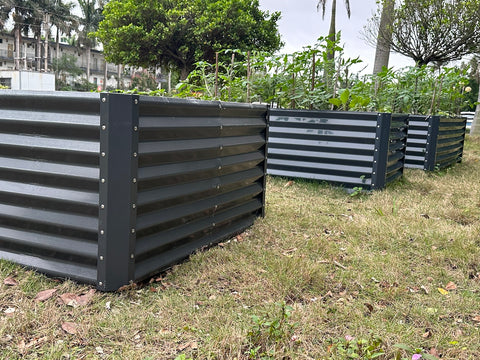
Composting in Your Raised Bed Compost Bin
Step 1: Layering Green and Brown Materials
Begin composting by layering green and brown materials. Green materials supply nitrogen, whereas brown materials provide carbon. Aim for a balanced mix to optimize the composting process.
Step 2: Turning the Compost
To accelerate decomposition, turn the compost regularly using a pitchfork or shovel. This introduces oxygen, a crucial component for the activity of composting microbes.
Step 3: Moisture Maintenance
Keep the compost moist but not waterlogged. If it gets too dry, add water; if it's too wet, add more dry brown materials. Proper moisture levels facilitate microbial activity.
Step 4: Composting Activators (Optional)
If you want to speed up the composting process, consider adding composting activators like finished compost, manure, or a commercial compost accelerator.
Step 5: Harvesting Finished Compost
After several weeks to months, depending on environmental conditions and the composting process, your compost will be ready. Harvest it by removing the hardware cloth or opening the hinged lid. The finished compost should be dark, crumbly, and have a rich earthy smell.
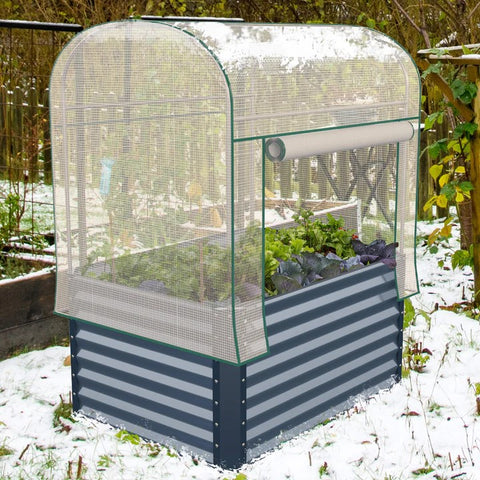
Benefits of DIY Raised Bed Compost Bins
- Space Efficiency:
Raised bed compost bins make efficient use of space, utilizing the area above the soil while keeping compost contained and organized within the garden.
- Easy Access:
With a raised bed compost bin, you have easy access to your compost for turning, monitoring, and harvesting. This convenience simplifies the composting process.
- Enhanced Soil Fertility:
The compost produced in raised bed bins is a nutrient-rich soil conditioner. When incorporated into your raised beds, it enhances soil fertility, promotes plant growth, and improves overall soil structure.
- Reduced Waste:
Composting kitchen scraps and yard waste in your raised bed reduces the amount of organic material sent to landfills. It's a sustainable way to recycle and repurpose organic waste.
- Customizable Design:
DIY raised bed compost bins offer flexibility in design. You can tailor the dimensions, materials, and features to fit your garden's aesthetic and functional requirements.
- Improved Aeration:
Elevating the composting process in a raised bed allows for better aeration. The mesh sides and optional aeration holes promote airflow, optimizing the decomposition process.
- Educational Value:
Having a compost bin in your raised bed provides an excellent opportunity for hands-on learning. It allows you to observe the decomposition process, understand the importance of nutrient cycling, and appreciate the benefits of composting.
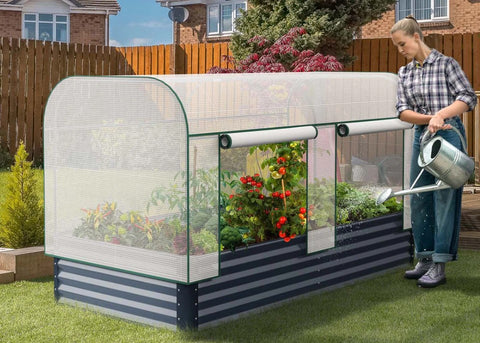
Tips for Successful Raised Bed Composting
- Balanced Green and Brown Materials:
Strive for a balanced mix of green and brown materials in your compost bin. Carbon comes from brown materials, while nitrogen comes from green materials. This balance ensures optimal decomposition.
- Regular Turning:
Turn your compost regularly to incorporate oxygen and aid in the decomposition of materials. A pitchfork or shovel works well for this task.
- Monitor Moisture Levels:
Keep an eye on moisture levels in the compost. It should be moist but not waterlogged. Adjust as needed by adding water or additional dry brown materials.
- Patience with the Process:
Composting is a natural process that takes time. Be patient and let the microbes perform their transformative processes. The result will be nutrient-rich compost for your garden.
- Harvesting Timing:
Harvest your compost when it has a dark, crumbly texture and a rich earthy smell. This indicates that the composting process is complete.
Conclusion
Creating a DIY raised bed compost bin transforms your gardening routine into a sustainable and regenerative practice. By turning kitchen scraps and yard waste into nutrient-rich compost right in your raised bed, you contribute to soil health, reduce waste, and cultivate a more environmentally conscious garden. Embrace the magic of composting, and watch as your raised beds thrive with the benefits of this black gold.









